
Image courtesy of BronxNet via YouTube
One of the points debated in the lead-up to the Democratic primary election for the position of Bronx district attorney, taking place on June 27 between incumbent Bronx District Attorney Darcel D. Clark and defense attorney Tess Cohen, was the district attorney’s handling of cases. Cohen alleges Clark could manage her office more efficiently.
Cohen also said the DA gets to set priorities and where resources are spent, saying it isn’t as though every City crime gets prosecuted. She said this was particularly the case with powerful people who “tend to hurt others, like landlords, employers.” She said “no one really pays attention” to what these people are doing because such cases do not typically stem from arrests, have to be sought out, and that it was up to the prosecutor to do that.
Meanwhile, Clark said she is prosecuting white collar crime but that it takes time and resources to do so. She also said that prosecutions are not the be all and end all, and that for her it’s both a matter of priority in terms of which cases get prosecuted, but also a matter of justice, citing her alternatives to incarceration program. “We have a high incidence of gang gun violence that I have to put resources in, we have domestic violence, sexual assault, and drugs; these are the kitchen table issues that people deal with each and every day,” she said.
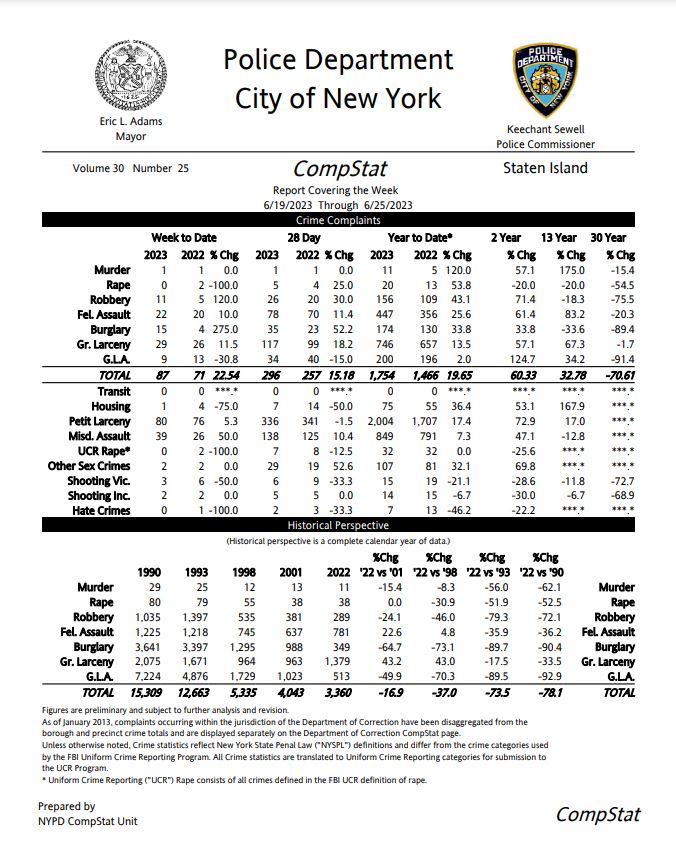
Source: NYPD
Meanwhile, Cohen alleges crime prevention initiatives that have been successfully implemented at other DA offices in the other boroughs are not being fully utilized in The Bronx.
The backdrop to the debate is the amount of crime being committed in each borough in order to assess, with appropriate context, if comparisons are appropriate, since the degree [and arguably the complexity] of case workload obviously has an impact on each district attorney’s office.
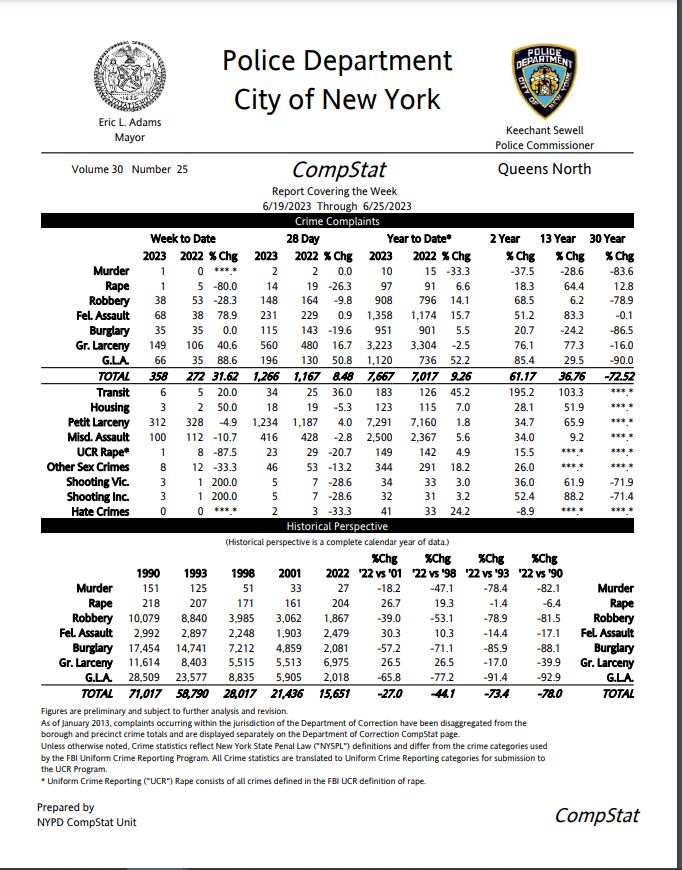
Source: NYPD
Norwood News asked the NYPD if a comparative crime overview report was available in order to provide this context to voters. We were referred to the NYPD’s webpage which contains a breakdown of crime from a number of different perspectives but does not include a comparative report by borough. Our previous story included some crime data for The Bronx compared to all counties in New York State.
Attached are extracts showing the evolution of historical crime rates per New York City borough in recent decades from 1990 to 2022.
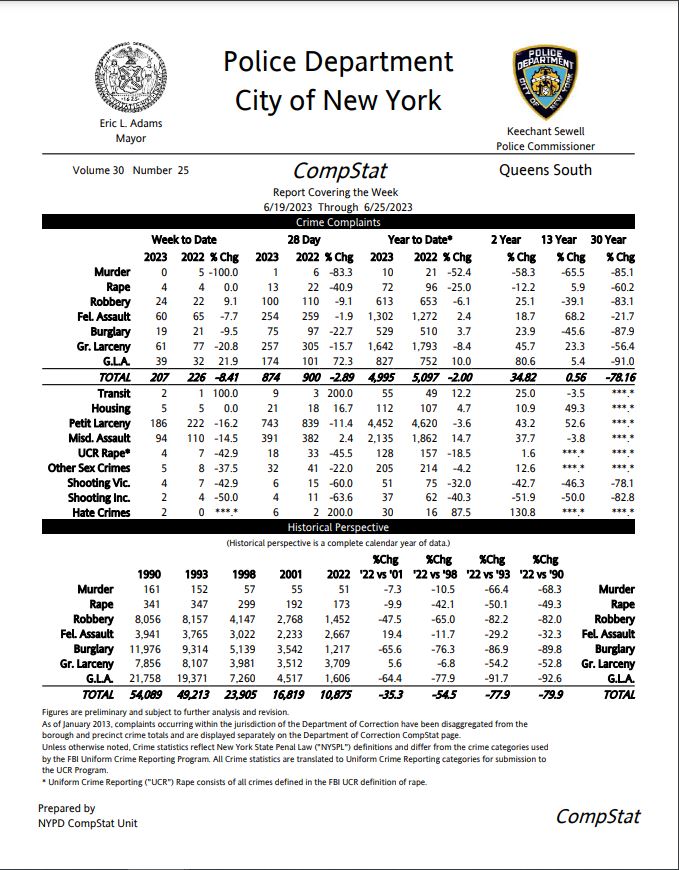
Source: NYPD
When it came to historical crime rates in Staten Island from 1990 to 2022, overall crime dropped by 78.1 percent during this period. Meanwhile, regarding historical crime rates in Queens North from 1990 to 2022, overall crime dropped by 78 percent.
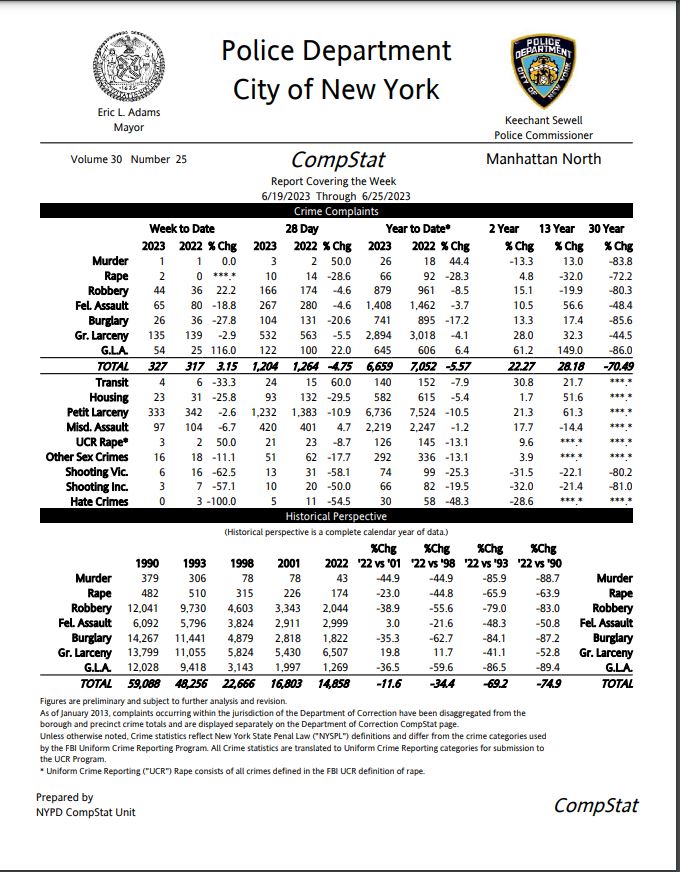
Source: NYPD
Regarding historical crime rates in Queens South from 1990 to 2022, overall crime dropped by 79.9 percent, and regarding historical crime rates in Manhattan North from 1990 to 2022, overall crime dropped by 74.9 percent.
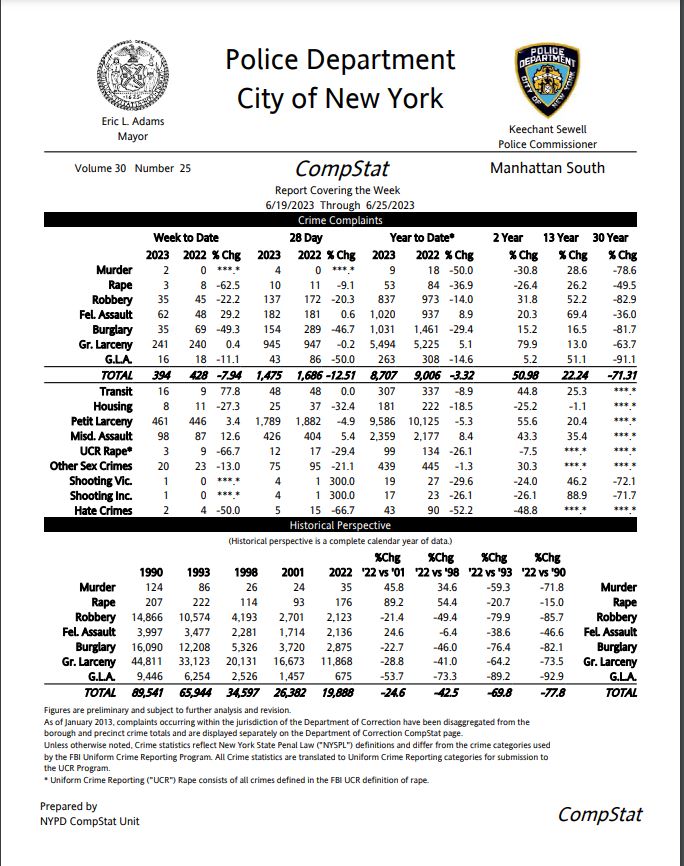
Source: NYPD
When it came to historical crime rates in Manhattan South from 1990 to 2022, overall crime dropped by 77.8 percent and in Brooklyn North, from 1990 to 2022, overall crime rates dropped by 74.9 percent.
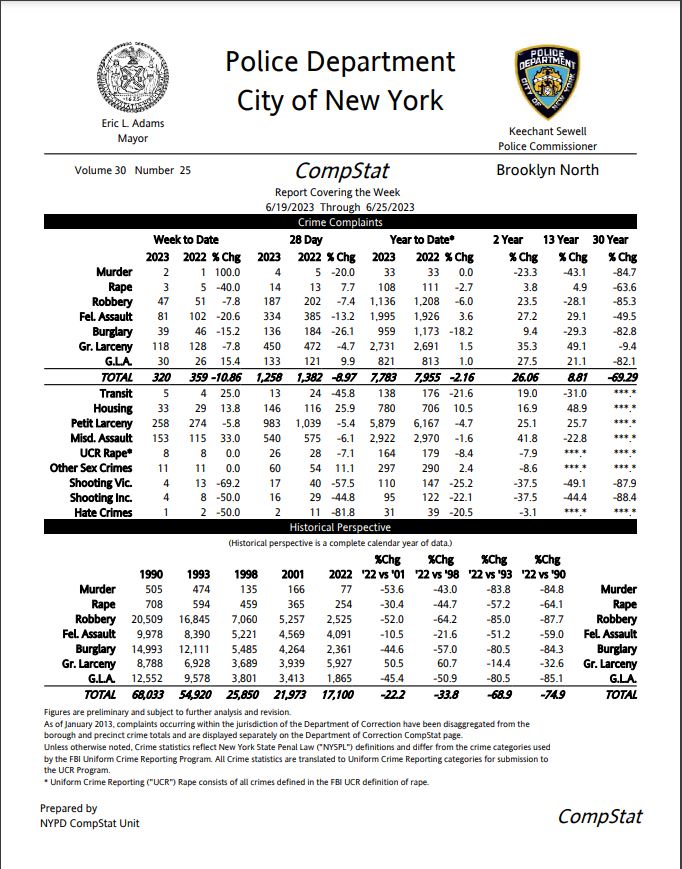
Source: NYPD
Regarding the historical crime rates in Brooklyn South from 1990 to 2022, overall crime dropped by 81.5 percent.
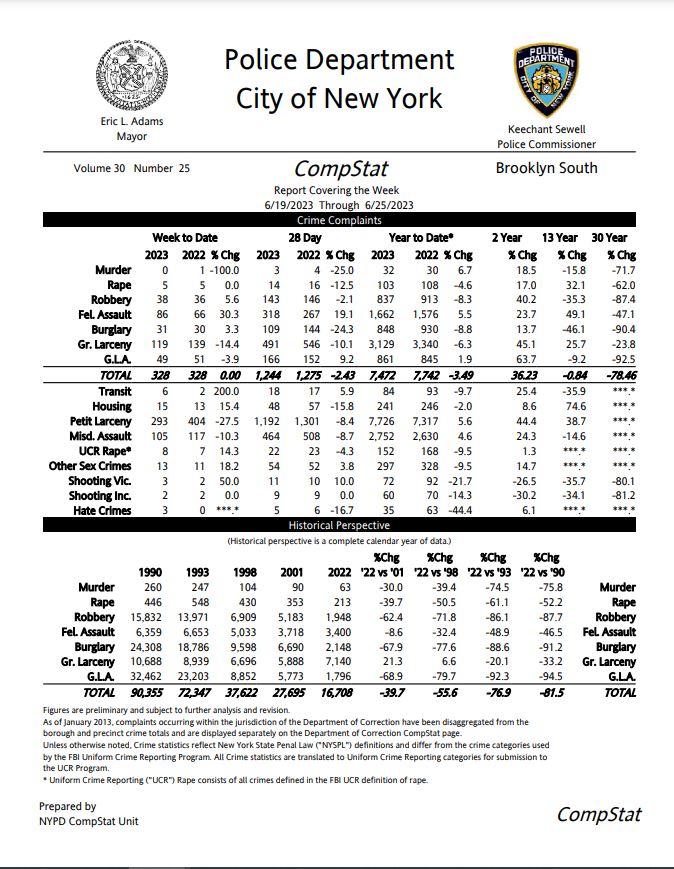
Source: NYPD
Finally, when it came to historical crime rates in The Bronx from 1990 to 2022, overall crime dropped only by 64.9 percent, the lowest drop in crime out of all five boroughs.
Meanwhile, when it comes to rates of poverty, which is not always the case but which can be a driver of crime, government data indicates that the percent of households with incomes below the federal poverty level are highest, at 26 percent, in The Bronx compared to the percent in Brooklyn (18 percent), Queens (11 percent), Staten Island (10 percent) and Manhattan (15 percent).
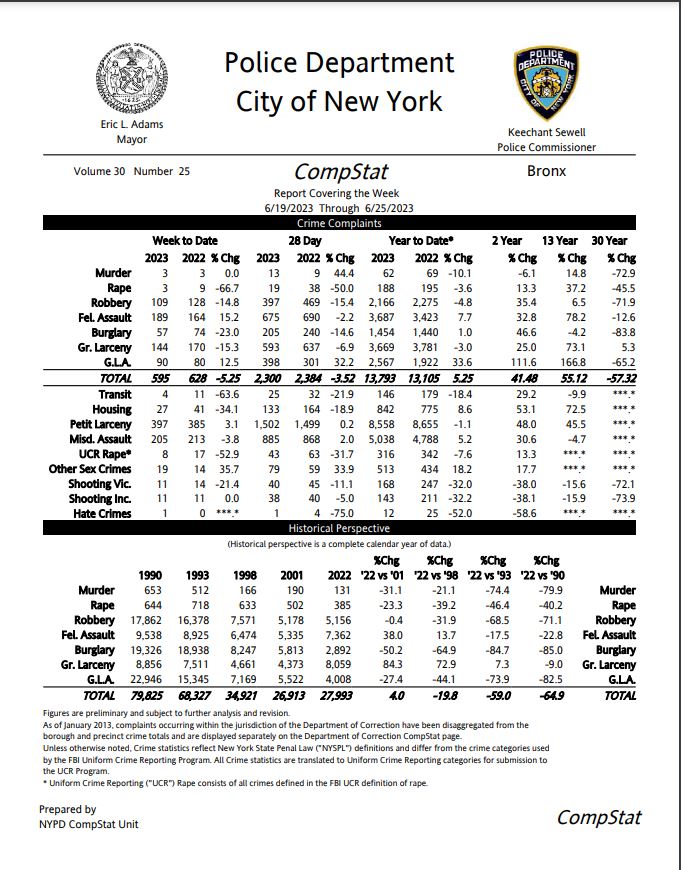
Source: NYPD
Additionally, in terms of unemployment, as of May 2023, the unemployment rate in the The Bronx was highest at 6.7 percent, compared to 4.5 percent in Queens, 4.8 percent in Staten Island, 5.4 percent in Brooklyn and 4.5 percent in Manhattan.
Polls are open on Primary Election Day, Tuesday, June 27, from 6 a.m. to 9 p.m. Click here to find your Election Day poll site. Return your absentee ballot by mail (postmark required) or drop it off at a poll site by Tuesday, June 27.




